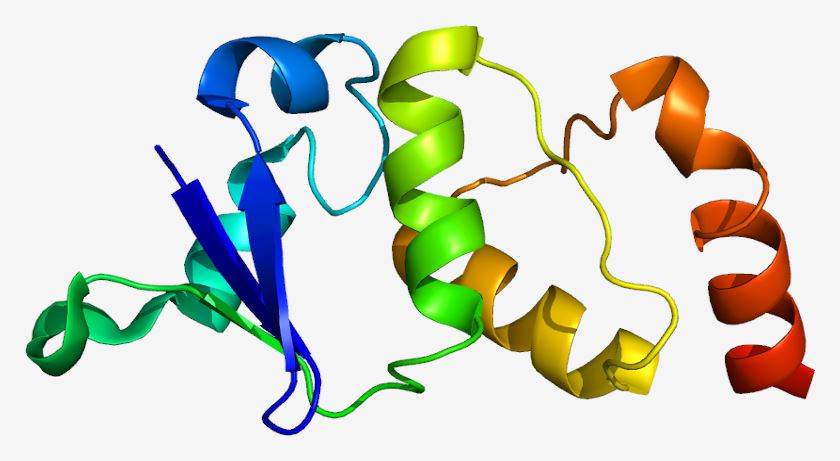Introduction of KCND2
KCND2, also known as Kv4.2, is a member of the potassium channel, voltage-gated, shal-related subfamily. There are four members in Kv4 subfamily including Kv4.1, Kv4.2, and two Kv4.3 splice variants. KCND1 protein encoded by KCND1 gene has 630 amino acid residues. It possesses six putative transmembrane segments (S1-S6) with a voltage-sensor in S4, flanked by intracellular domains of variable length and a pore domain P between S5 and S6. KCND2 is highly expressed throughout the brain including the amygdala, caudate nucleus, cerebellum, hippocampus, substantia nigra, and thalamus.
| Basic Information of KCND2 | |
| Protein Name | Potassium voltage-gated channel subfamily D member 2 |
| Gene Name | KCND2 |
| Aliases | RK5, KV4.2 |
| Organism | Homo sapiens (Human) |
| UniProt ID | Q9NZV8 |
| Transmembrane Times | 6 |
| Length (aa) | 630 |
| Sequence | MAAGVAAWLPFARAAAIGWMPVASGPMPAPPRQERKRTQDALIVLNVSGTRFQTWQDTLERYPDTLLGSSERDFFYHPETQQYFFDRDPDIFRHILNFYRTGKLHYPRHECISAYDEELAFFGLIPEIIGDCCYEEYKDRRRENAERLQDDADTDTAGESALPTMTARQRVWRAFENPHTSTMALVFYYVTGFFIAVSVIANVVETVPCGSSPGHIKELPCGERYAVAFFCLDTACVMIFTVEYLLRLAAAPSRYRFVRSVMSIIDVVAILPYYIGLVMTDNEDVSGAFVTLRVFRVFRIFKFSRHSQGLRILGYTLKSCASELGFLLFSLTMAIIIFATVMFYAEKGSSASKFTSIPAAFWYTIVTMTTLGYGDMVPKTIAGKIFGSICSLSGVLVIALPVPVIVSNFSRIYHQNQRADKRRAQKKARLARIRAAKSGSANAYMQSKRNGLLSNQLQSSEDEQAFVSKSGSSFETQHHHLLHCLEKTTNHEFVDEQVFEESCMEVATVNRPSSHSPSLSSQQGVTSTCCSRRHKKTFRIPNANVSGSHQGSIQELSTIQIRCVERTPLSNSRSSLNAKMEECVKLNCEQPYVTTAIISIPTPPVTTPEGDDRPESPEYSGGNIVRVSAL |
Function of KCND2 Membrane Protein
KCND2 is a voltage-gated potassium channel that plays an important role in the transportation of potassium ions across the membrane in accordance with their electrochemical gradient. It plays a very important role in the repolarization phase of the action potential through regulating a rapidly inactivating, A-type outward potassium current. It also mediates neuronal excitability, extends the latency before the first spike in a series of action potentials, controls repetitive action potential firing frequency, shortens the duration of action potentials and regulates the reverse transmission of action potential from the nerve cell body to dendrite. Furthermore, KCND2 is also involved in the regulation of the circadian rhythm of action potential firing in suprachiasmatic nucleus neurons, which mediates the circadian rhythm of locomotor activity. All of the above suggest potassium channel Kv4.2 can be regarded as a critical regulator to maintain a healthy excitatory balance in the brain. The deficiency of KNCD2 has been revealed a role in neurological disorders including autism and epilepsy.
 Fig.1 Structure of the KCND2 protein.
Fig.1 Structure of the KCND2 protein.
Application of KCND2 Membrane Protein in Literature
The study suggests that V404M in Kv4.2 gene has state-dependent effects on closed-state inactivation (CSI), which disturbs the regulation of neuronal excitability and the induction of spike-timing-dependent plasticity.
The study has shown that KCND2 gene is a new cause of J-wave syndrome related to cardiac arrest.
The study suggests that KCND2 plays a role in synaptic plasticity and the interaction of KCND2 with other genes may be involved in the pathological process of autism.
The study finds the expression of Kv4.2 in both neuronal and glial cells. Moreover, Kv4.2 is associated with the regulation of potassium channel interacting proteins, changes in the subcellular localization of the channel, and phosphorylation-mediates posttranslational modifications.
The study shows that miR-324-5p-mediated silencing of Kv4.2 exerts an important role in seizure onset. And miR-324-5p inhibition is associated with neuroprotective and seizure suppressive.
KCND2 Preparation Options
To obtain the soluble and functional target protein, the versatile Magic™ membrane protein production platform in Creative Biolabs enables many flexible options, from which you can always find a better match for your particular project. Aided by our versatile Magic™ anti-membrane protein antibody discovery platform, we also provide customized anti-KCND2 antibody development services.
As a forward-looking research institute as well as a leading custom service provider in the field of membrane protein, Creative Biolabs has won good reputation among our worldwide customers for successfully accomplishing numerous challenging projects including generation of many functional membrane proteins. Please feel free to contact us for more information.
All listed services and products are For Research Use Only. Do Not use in any diagnostic or therapeutic applications.